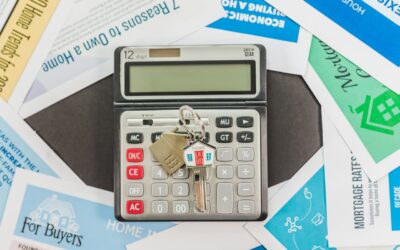Bridging loans usually work on a 15-month term with repayment in one lump sum at the end. Monthly interest charge tends to also be paid as part of the lump sum.
However, the repayment format will depend on the type of bridging loan and the specific loan terms agreed. In this guide, we will discuss the different types of repayment options for bridging loans.
What Is A Bridging Loan Used For?
Bridging loans are a form of short-term financing used for ‘bridging the gap’ between two transactions – typically the buying of a property and selling of another one. It provides instant cash flow for those in the property sector who need funding but cannot access funds yet.
How Are Bridging Loans Repaid?
Bridging loans are typically paid in one lump sum at the end of the loan term, rather than in monthly payments. This allows individuals or companies to borrow a higher amount of money at a time. Loan terms are also usually around 12 months, with quick turnarounds for repayment.
The interest can be paid back in a number of ways but it is typically accumulated over the duration of the loan term and paid back at the end as part of the lump sum payment.
As a relatively high-risk loan, they must be secured by a form of collateral such as a property or business asset. In addition to approving collateral, the lender must also have to approve an exit strategy (i.e. how you plan to repay the loan) before any money is borrowed.
Your exit strategy will outline whether you will be looking to refinance at the end of the loan term, including shifting to a more traditional long-term financing option, or will be looking at resale. For example, you may be borrowing money to develop a property with the plan to sell that property and use the money to pay off the loan.
Other exit strategies might include money from an unpaid customer invoice or inheritance from a probate property. Whatever the strategy, it will need to be realistic and has to be convincing for the lender.
Common Repayment Strategies For Bridging Loans
As already mentioned, when agreeing on the terms of a bridging loan, there will need to be an exit strategy agreement. So, before even lending any money, it will need to be established how the money will be paid back.
Resale: The most common exit strategy for repaying a bridging loan is by selling the purchased property. This involves selling the property that you purchased using the bridging loan and then using the proceeds to repay the loan. You could also sell another property or asset that you have, such as business shares or valuable items, to repay the bridging loan.
Refinancing: One option at the end of your loan term is switching to a lower-interest, long-term mortgage to repay the bridging loan. This is a common strategy in the property sector with investors using a bridging loan for a quick property purchase and then repaying the bridging loan using a long-term buy-to-let mortgage.
If you are going down this route, you will need to factor in monthly payments. Traditional loans work on the basis that you make monthly loan payments and lenders will usually want to see proof of income or salary and run a credit check.
Other options: To repay your bridging loan, you could also look to other methods such as a business sale or inheritance. As long as you are able to viably demonstrate where the money will come from, a lender doesn’t really mind how you get the money.

What Happens If You Can’t Repay Your Bridging Loan?
Repayment is expected once the exit strategy has been completed i.e. once the next round of equity financing has been sourced or the property has been resold.
If you should default your loan payment by not repaying on the agreed date, the lender might demand immediate repayment of the full amount. This will depend on the agreed loan terms. If you cannot repay the loan when this amount is demanded, the lender could attempt to repossess the property you put up as collateral.
How Do You Repay Interest On A Bridging Loan?
Bridging loans are known to carry a higher interest than typical loans due to their short-term and high-risk nature. When repaying the interest on your bridging loan, you will usually have a few different options:
Monthly interest payments: You can choose to make monthly interest payments during your loan term, similar to those of an interest-only loan.
Lump sum interest payment: Here, your interest could be accumulated over the loan term and added to the lump sum you repay at the end.
How Long Does It Take To Repay A Bridging Loan?
A typical bridging loan term is around 15 months but can vary from between 90 days to 2 years. This will largely depend on the type of bridge loan you choose and the terms set by your lender.
Some variations of bridging loans include:
Closed Bridging Loan – Closed bridging loans work with a fixed time frame that is agreed up front by both borrower and lender. It offers certainty about the loan repayment including how much will be paid, when and how. These tend to have lower interest rates than other bridging loans.
These loans come with a fixed repayment date which will align with a known sale date for an existing property or completion of long-term financing. This will tend to be within 12 months of taking out the loan or less.
Open Bridging Loan – Because open bridging loans have an undetermined time frame when the loan agreement is made, there is no fixed date for repayment. This makes it a greater risk for borrowers. As a result, the lender may choose to deduct the loan interest from the loan advance.
As open bridging loans have no fixed repayment date, it makes them a suitable option for buyers waiting to sell another property or secure long-term financing without a set completion date.
While this option may be preferable for borrowers who are unclear about when they will be able to repay the loan, it also yields higher interest rates and will ultimately be a more expensive option.
These loans could take any length of time to repay as there is no fixed agreement.
Repaying A Bridge Loan At The End Of A Loan Term
Unlike a regular loan, bridging loans do not need to be paid back monthly. Instead, you can pay the full value at the end of the loan term.
This gives you time to get payment from your property and use that to pay off the loan. In most cases, you will have the option to pay your interest monthly (such as with an interest-only loan) or in full as part of the lump sum payment at the end of the loan term. The latter is the most common option.


